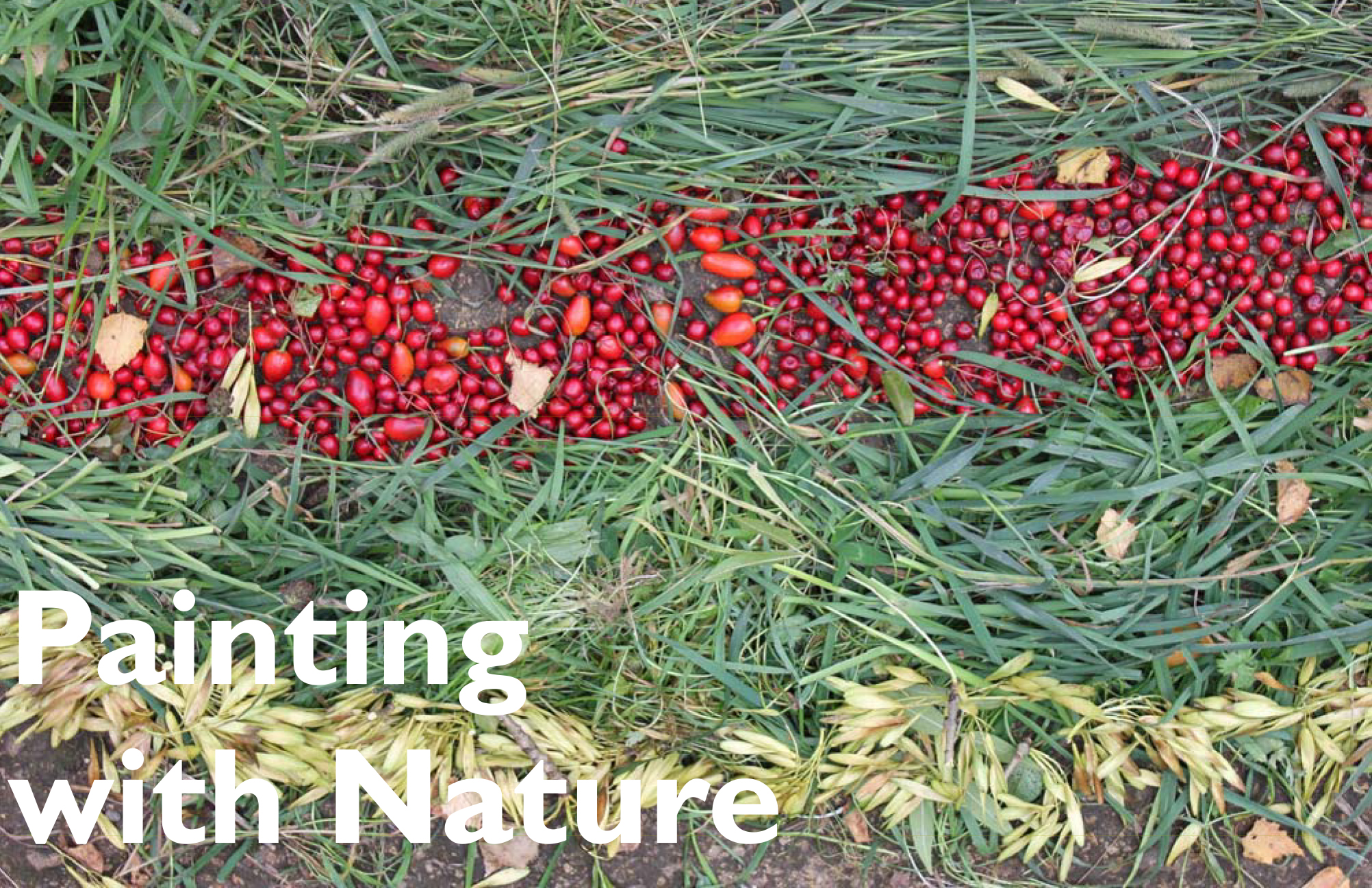In this activity, participants gather colourful natural materials then work together to arrange them into temporary ‘drawings’. This builds confidence with non-traditional art materials and encourages close observation of the features of the natural world.
The Activity
Artform/Type of Activity
- Observation
- Drawing (without pens/ pencils)
- Sculpture/ installation
Objectives/Outcomes
- To develop confidence in drawing
- To gain better understanding of the natural environment through close observation
- To use natural materials to explore colour and contrast, species variation
- To explore the work of Andy Goldsworthy (internationally established contemporary artist) and Arcimboldo
Materials Required
- For preparation session – images of works by Andy Goldsworthy and Arcimboldo (both can be sourced from the internet)
- For workshop activity – scissors, knives, collecting bags (if taking materials back to classroom/ workroom/ other space)
- Hand gel/ wipes
- Materials to be collected on site: petals, leaves, twigs, shells, stones etc
- Camera/s
Space Requirements
Site visit: ideally the work/s should be created on site during the visit. Alternatively suitable quantities of natural materials can be collected and taken back to another space suitable for the subsequent creation of the work/s (ideally out of doors).
NB: where the work/s are to be created on site, then care must be taken that no damage is done to the site and its inhabitants during collection or by leaving accumulations of eg leaves, twigs, stones, driftwood etc. The nature of the site and the installation materials used will govern how it is best to leave it, for example, collected pebbles and stones on a beach may be safe to leave as the next tide will re-disperse them, whereas driftwood damming a stream should be redistributed. Artists/ Teachers/ Leaders will need to make these assessments in advance and allow time for any necessary action.
Activity Instructions
- Preparatory session: look at images of work by Andy Goldsworthy, especially the pieces where he collects and arranges leaves of varied and/or graduated colour. Explore the powerful effects he achieves by the careful selection and placing of natural elements. Also look at the work of Arcimboldo, the 16th Century painter who created portraits and likenesses out of flowers, vegetables and suchlike.
- On site: Artist/ Teacher/ Leader will decide whether materials are to be collected on site and then used ‘back at base’, or whether the artworks are to be made in situ. If collecting to take elsewhere, then be sure you collect plenty; if collecting for work on site, materials can be gathered throughout the exercise.
- For gathering materials, clear rules will be:
- clear guidance to be sought from nature expert on plants that can be harmful to humans (eg Hogweed – Heracleum) or that are protected and should not be disturbed
- only pick a small part of any plant
- no living creatures
- take care around sharp objects, thorns, stinging plants etc: gloves if necessary
- Further important decisions to be made will be whether there is to be one collective image made by the whole group, or several smaller images made by groups of participants. A crucial decision will be the nature of the images/ installation to be made. This will vary with the participants and the setting in which the installation/s is/are to be made: ie, younger children in a school playground might like to make images of flowers, leaves and butterflies, whereas older participants with more developed artistic understanding and working on a natural site, would be better encouraged to recreate Goldsworthy’s approach, responding to natural shapes and features.
- It is helpful to stop work occasionally to review and consider progress. Groups working separately will benefit from looking at what others are doing. Groups working on one large image/ piece will benefit from taking a breather and standing back.
- Discuss the materials used so far, what might be different, what might be better or more effective etc.
- Complete work/s and take lots of photographs.
- If appropriate, leave for passers-by to admire!
Curricular Links
Links to Art and Design through: observation; colour; design; use of materials; exploring works by significant contemporary and historic artists
Links to Science through: exploration of site; use of natural materials
Links to Geography through: development of field skills and identification of the characteristics of specific areas
This resource was designed as part of the Green TV project.
PDF Work Sheet
See our A to Z of creative activities here.
Funded By
The creation of this resource was made possible by funding from the Heritage Lottery Fund.

